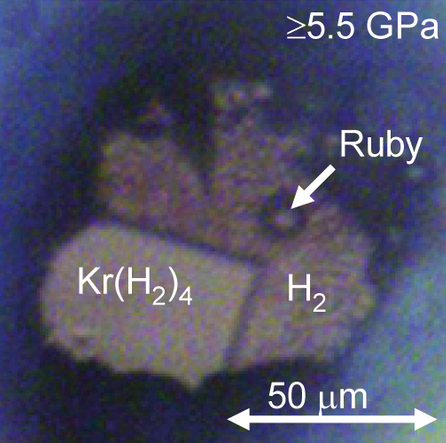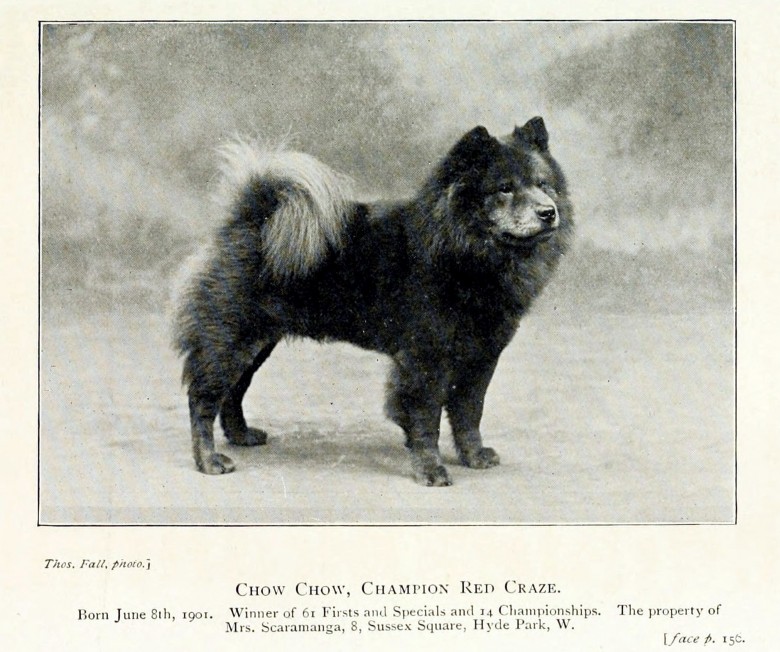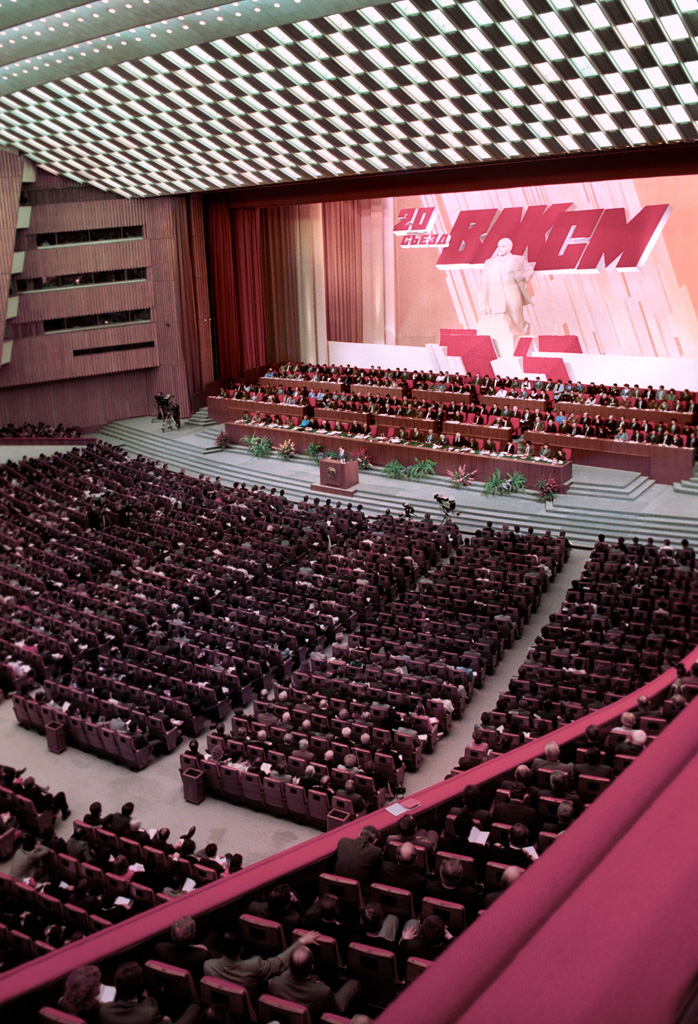|
Valery Legasov
Valery Alekseyevich Legasov (russian: Валерий Алексеевич Легасов; 1 September 1936 – 27 April 1988) was a Soviet and Russian inorganic chemist and a member of the Academy of Sciences of the Soviet Union. He is now mainly remembered for his work in containment of the Chernobyl disaster and presenting the investigation findings to the International Atomic Energy Agency (IAEA) in Vienna. Early life Valery Alekseyevich Legasov was born on September 1, 1936, in Tula, Russian SFSR, into a family of civil workers. He attended secondary school in Kursk. In 1949–1954, he attended School No. 56 in Moscow and graduated with a gold medal. While he was a shy student, he excelled in both academic work and social activities being elected secretary of his school's Komsomol committee. During 1953, he proposed reforms to the Komsomol committee to address what he perceived as indifference and passivity of its members. These ideas were quickly quashed by the authorit ... [...More Info...] [...Related Items...] OR: [Wikipedia] [Google] [Baidu] |
Tula, Russia
Tula ( rus, Тула, p=ˈtulə) is the largest city and the administrative center of Tula Oblast in Russia, located south of Moscow. Tula is located in the northern Central Russian Upland on the banks of the Upa River, a tributary of the Oka. At the 2010 census, Tula had a population of 501,169, an increase from 481,216 in 2002, making it the 32nd largest city in Russia by population. A primarily industrial city, Tula was a fortress at the border of the Principality of Ryazan. The city was seized by Ivan Bolotnikov, and withstood a four-month siege by the Tsar's army. Historically, Tula was a major centre for the manufacture of armaments. The Demidov family built the first armament factory in Russia in the city, in what would become the Tula Arms Plant, which still operates to this day. Tula is home to the Klokovo air base, Tula State University, Tula Kremlin, The Tula State Museum of Weapons and Kazanskaya embankment of the Upa River (). Tula has a historical association ... [...More Info...] [...Related Items...] OR: [Wikipedia] [Google] [Baidu] |
International Atomic Energy Agency
The International Atomic Energy Agency (IAEA) is an intergovernmental organization that seeks to promote the peaceful use of nuclear energy and to inhibit its use for any military purpose, including nuclear weapons. It was established in 1957 as an autonomous organization within the United Nations system; though governed by its own founding treaty, the organization reports to both the General Assembly and the Security Council of the United Nations, and is headquartered at the UN Office at Vienna, Austria. The IAEA was created in response to growing international concern toward nuclear weapons, especially amid rising tensions between the foremost nuclear powers, the United States and the Soviet Union. U.S. President Dwight D. Eisenhower's " Atoms for Peace" speech, which called for the creation of an international organization to monitor the global proliferation of nuclear resources and technology, is credited with catalyzing the formation of the IAEA, whose treaty came into ... [...More Info...] [...Related Items...] OR: [Wikipedia] [Google] [Baidu] |
Noble Gas Compound
In chemistry, noble gas compounds are chemical compounds that include an element from the noble gases, group 18 of the periodic table. Although the noble gases are generally unreactive elements, many such compounds have been observed, particularly involving the element xenon. From the standpoint of chemistry, the noble gases may be divided into two groups: the relatively reactive krypton (ionisation energy 14.0 eV), xenon (12.1 eV), and radon (10.7 eV) on one side, and the very unreactive argon (15.8 eV), neon (21.6 eV), and helium (24.6 eV) on the other. Consistent with this classification, Kr, Xe, and Rn form compounds that can be isolated in bulk at or near standard temperature and pressure, whereas He, Ne, Ar have been observed to form true chemical bonds using spectroscopic techniques, but only when frozen into a noble gas matrix at temperatures of 40 K or lower, in supersonic jets of noble gas, or under extremely high pressures with metals. ... [...More Info...] [...Related Items...] OR: [Wikipedia] [Google] [Baidu] |
Neil Bartlett (chemist)
Neil Bartlett (15 September 1932 – 5 August 2008) was a chemist who specialized in fluorine and compounds containing fluorine, and became famous for creating the first noble gas compounds. He taught chemistry at the University of British Columbia and the University of California, Berkeley. Biography Neil Bartlett was born on 15 September 1932 in Newcastle-upon-Tyne, England. Bartlett's interest in chemistry dated back to an experiment at Heaton Grammar School when he was only eleven years old, in which he prepared "beautiful, well-formed" crystals by reaction of aqueous ammonia with copper sulfate. He explored chemistry by constructing a makeshift lab in his parents' home using chemicals and glassware he purchased from a local supply store. He went on to attend King's College, University of Durham (which went on to become Newcastle University) in the United Kingdom where he obtained a Bachelor of Science (1954) and then a doctorate (1958). In 1958, Bartlett's career began up ... [...More Info...] [...Related Items...] OR: [Wikipedia] [Google] [Baidu] |
Gaseous Fission Reactor
A gas nuclear reactor (or gas fueled reactor or vapor core reactor) is a proposed kind of nuclear reactor in which the nuclear fuel would be in a gaseous state rather than liquid or solid. In this type of reactor, the only temperature-limiting materials would be the reactor walls. Conventional reactors have stricter limitations because the core would melt if the fuel temperature were to rise too high. It may also be possible to confine gaseous fission fuel magnetically, electrostatically or electrodynamically so that it would not touch (and melt) the reactor walls. A potential benefit of the gaseous reactor core concept is that instead of relying on the traditional Rankine or Brayton conversion cycles, it may be possible to extract electricity magnetohydrodynamically, or with simple direct electrostatic conversion of the charged particles. Theory of operation The vapor core reactor (VCR), also called a gas core reactor (GCR), has been studied for some time. It would have a gas ... [...More Info...] [...Related Items...] OR: [Wikipedia] [Google] [Baidu] |
Uranium Hexachloride
Uranium hexachloride (UCl6) is an inorganic chemical compound of uranium in the +6 oxidation state. UCl6 is a metal halide composed of uranium and chlorine. It is a multi-luminescent dark green crystalline solid with a vapor pressure between 1-3 mmHg at 373.15 K. UCl6 is stable in a vacuum, dry air, nitrogen and helium at room temperature. It is soluble in carbon tetrachloride (CCl4). Compared to the other uranium halides, little is known about UCl6. Structure and Bonding Uranium hexachloride has an octahedral geometry, with point group Oh. Its lattice (dimensions: 10.95 ± 0.02 Å x 6.03 ± 0.01 Å) is hexagonal in shape with three molecules per cell; the average theoretical U-Cl bond is 2.472 Å long (the experimental U-Cl length found by X-ray diffraction is 2.42 Å), and the distance between two adjacent chlorine atoms is 3.65 Å. Chemical Properties Uranium hexachloride is a highly hygroscopic compound and decomposes readily when exposed to ord ... [...More Info...] [...Related Items...] OR: [Wikipedia] [Google] [Baidu] |
Tomsk Polytechnic University
National Research Tomsk Polytechnic University (TPU) is a technical university in Russia. TPU was a member of 12 international associations, including the Conference of European Schools for Advanced Engineering Education and Research (CESAER) until it was suspended in March 2022, and the European University Association (EUA) until it was suspended in March 2022. TPU was included in Project 5-100, a 2013 state program aimed at bringing at least five Russian universities from among the project participants into the 100 best universities in the world. In 2022, the university was ranked #801 in the world by World University Rankings by ''Times Higher Education'', and #847 in the world by '' U.S. News & World Report'', and in 2020 it was ranked #862 in the world by University Ranking by Academic Performance (URAP) History Tomsk Technological Institute of Emperor Nicholas II TPU was founded by the Ministry of National Education of the Russian Empire in 1896 as Tomsk Technological Ins ... [...More Info...] [...Related Items...] OR: [Wikipedia] [Google] [Baidu] |
Seversk
Seversk ( rus, Се́верск, p=ˈsʲevʲɪrsk) is a closed city in Tomsk Oblast, Russia, located northwest of Tomsk on the right bank of the Tom River. Population: It was previously known as ''Pyaty Pochtovy'' (until 1949) and ''Tomsk-7'' (until 1992). Climate Seversk has a humid continental climate (Köppen climate classification ''Dfb'') with warm summer. The annual average temperature is 0.6 °C (33°F). The average temperature in January is between -21 °C (-6°F) and -13 °C (-9°F). The average temperature in July is 19.2 °C (67°F). The total annual rainfall is 530 millimeters (21"). History Founded in 1949, it was known as Pyaty Pochtovy (, lit. ''the Fifth Postal'') until 1954 and as Tomsk-7 () until 1992. City status was granted to it in 1956. Administrative and municipal status Within the framework of administrative divisions, it is, together with five rural localities, incorporated as Seversk City Under Oblast Jurisdiction—an administrative unit with the ... [...More Info...] [...Related Items...] OR: [Wikipedia] [Google] [Baidu] |
Siberian Chemical Combine
The Siberian Chemical Combine (russian: Сибирский химический комбинат) was established in 1953 in Tomsk-7 now known as Seversk, in the Tomsk Region as a single complex of the nuclear technological cycle for the creation of nuclear weapons components based on fissile materials (highly enriched uranium and plutonium). It is a subsidiary of TVEL (Rosatom group). History The Siberian Chemical Combine played an important role in the Soviet Union's nuclear weapons program. The facility produced plutonium and highly enriched uranium (HEU), and fabricated warhead components using produced plutonium and HEU. As the Cold War came to an end, the Siberian Chemical Combine's HEU production ceased and the last plutonium production nuclear reactor at the facility was shut down in 2008. The site had five reactors: EI-1 (1955), EI-2 (1958), ADE-3 (1961) and ADE-2 (1963). The ADE series of reactors also produced thermal and electrical energy, reaching electricity producti ... [...More Info...] [...Related Items...] OR: [Wikipedia] [Google] [Baidu] |
Chow-chow
The Chow Chow is a spitz-type of dog breed originally from northern China. The Chow Chow is a sturdily built dog, square in profile, with a broad skull and small, triangular, erect ears with rounded tips. The breed is known for a very dense double coat that is either smooth or rough. The fur is particularly thick in the neck area, giving it a distinctive ruff or mane appearance. The coat may be shaded/self-red, black, blue, cinnamon/fawn, or cream. History The Chow Chow has been identified as a basal breed that predates the emergence of the modern breeds in the 19th Century. One writer proposed that the Chow Chow originated in China 2,000 years ago or possibly originated in Arctic Asia 3,000 years ago which migrated to Mongolia, then to China. One Chinese legend mentions large war dogs from Central Asia that resembled black-tongued lions. One Chinese ruler was said to own 5,000 Chows. The Chinese also used Chows to pull dog sleds through swampy terrain, and this was ... [...More Info...] [...Related Items...] OR: [Wikipedia] [Google] [Baidu] |
Yuri Bondarev
Yuri Vasilyevich Bondarev (russian: link=no, Юрий Васильевич Бондарев, 15 March 1924 — 29 March 2020) was a Soviet and Russian writer and screenwriter. He was best known for co-authoring the script for the serial film franchise ''Liberation'' (1968–71). Biography Bondarev took part in World War II as an artillery officer and became a member of the CPSU in 1944. He graduated in 1951 from the Maxim Gorky Literature Institute. His first collection of stories entitled ''On a Large River'' was published in 1953. His first successes in literature, the novels ''The Battalions Request Fire'' (1957) and ''The Last Salvoes'' (1959) were part of a new trend of war fiction which dispensed with pure heroes and vile villains in favor of emphasizing the true human cost of war. ''The Last Salvos'' was adapted for the cinema in 1961. His next novels ''Silence'' (1962), ''The Two'' (1964) and ''Relatives'' (1969) established him as a leading Soviet writer. His novel ''Si ... [...More Info...] [...Related Items...] OR: [Wikipedia] [Google] [Baidu] |
Central Committee Of The Komsomol
The Central Committee of the Komsomol (Russian language, Russian: Центральный комитет ВЛКСМ, ''Tsentral'niy komitet VLKSM'') was the executive leadership of the Komsomol, All-Union Leninist Young Communist League, commonly known as the Komsomol. According to the Komsomol Charter adopted at the 14th Congress of the Komsomol (1962), the Central Committee "directs the entire work of the Komsomol, local Komsomol bodies, represents the Komsomol in state and public institutions and organizations, approves the editorial board of the central body - "Komsomolskaya Pravda" and other editorial offices, distributes the Komsomol budget and monitors its implementation." The Central Committee of the Komsomol was dissolved on September 28, 1991 along with the Komsomol organization itself. Organization The Central Committee was elected at Komsomol congresses by secret ballot. The Central Committee consisted of full members who could cast a vote and candidate members who h ... [...More Info...] [...Related Items...] OR: [Wikipedia] [Google] [Baidu] |
.jpg)






